Sanguinaria canadensis
Gardening season has begun! The last leaves of bloodroot  turning yellow and wilting in late Fall signals the beginning of gardening season for the Sanguine Root horticultural staff. We begin by ceremoniously digging up a bloodroot root and breaking it into pieces. The new root segments are then replanted in new suitable locations on the grounds.
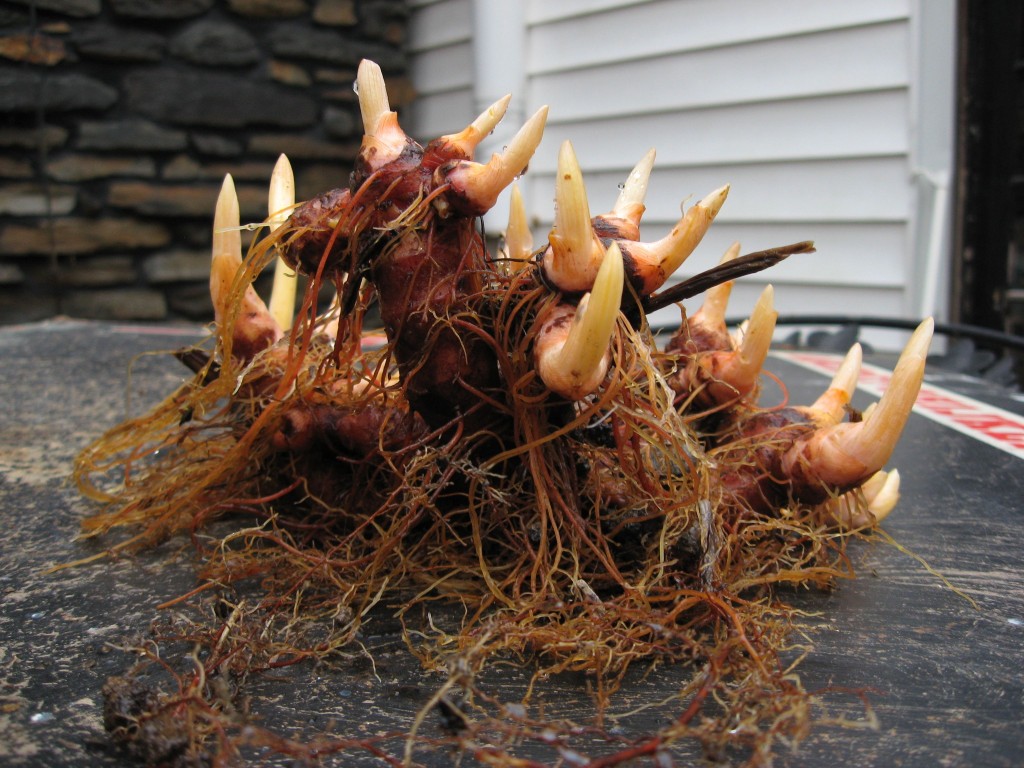
A bloodroot leaf still holds on to the root mass. Â Each white bud will send up a leaf and a flower in March 2012. Â The embryonic form of the leaf and flower are waiting inside the structure of the bud.
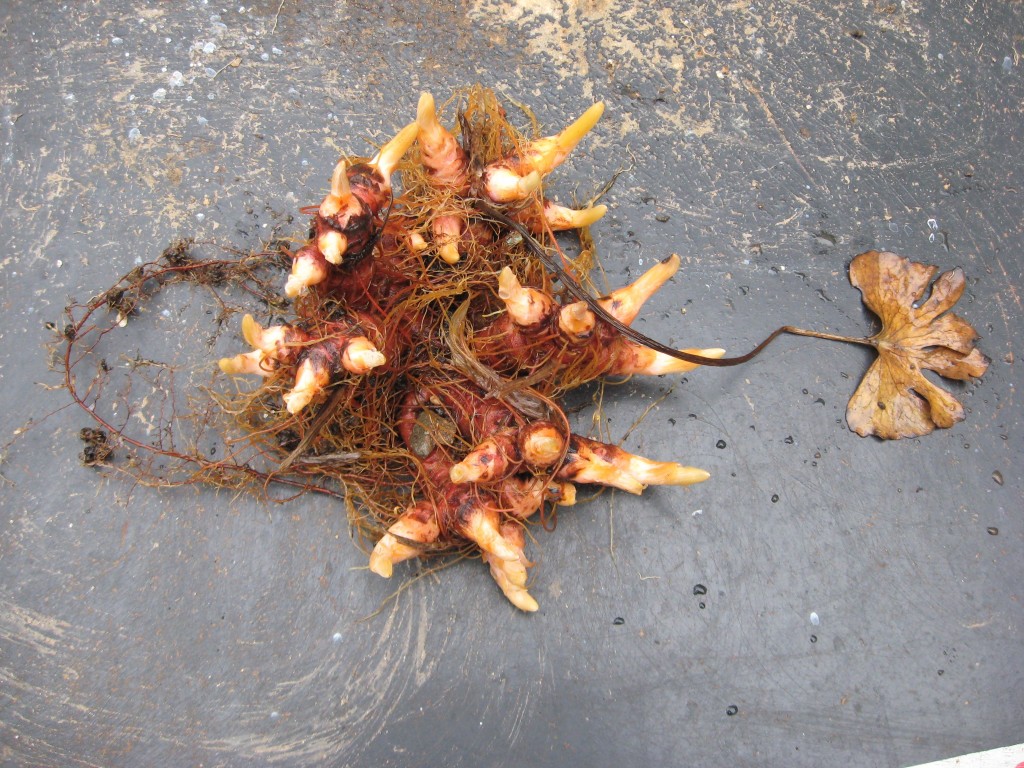
Above is the root, below is the Flower.
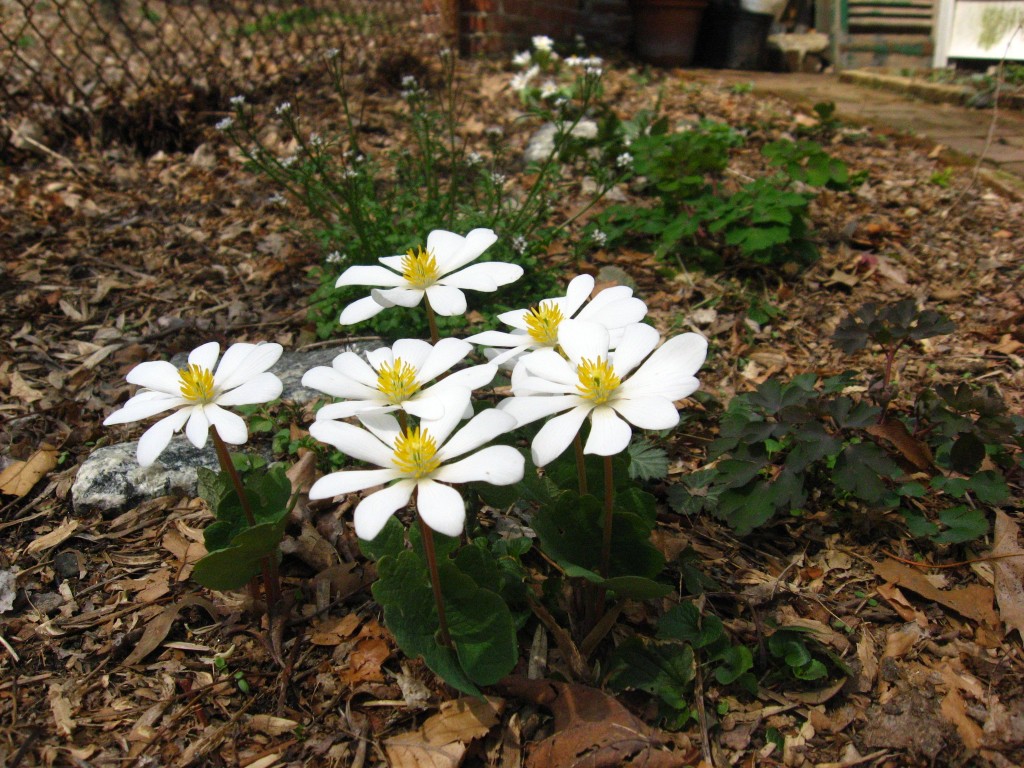
The gardening fun in November gets better. Time to thin the Mayapple Patch.  Mayapple is a beautiful plant that makes a great garden addition.  This year we had so many flowers they were  crowding each other out.  We found a new spot to create a Mayapple patch in the backyard. This spot was nothing but a mess of weeds, notably Japanese stiltgrass, a noxious invasive exotic.
Podophyllum peltatum
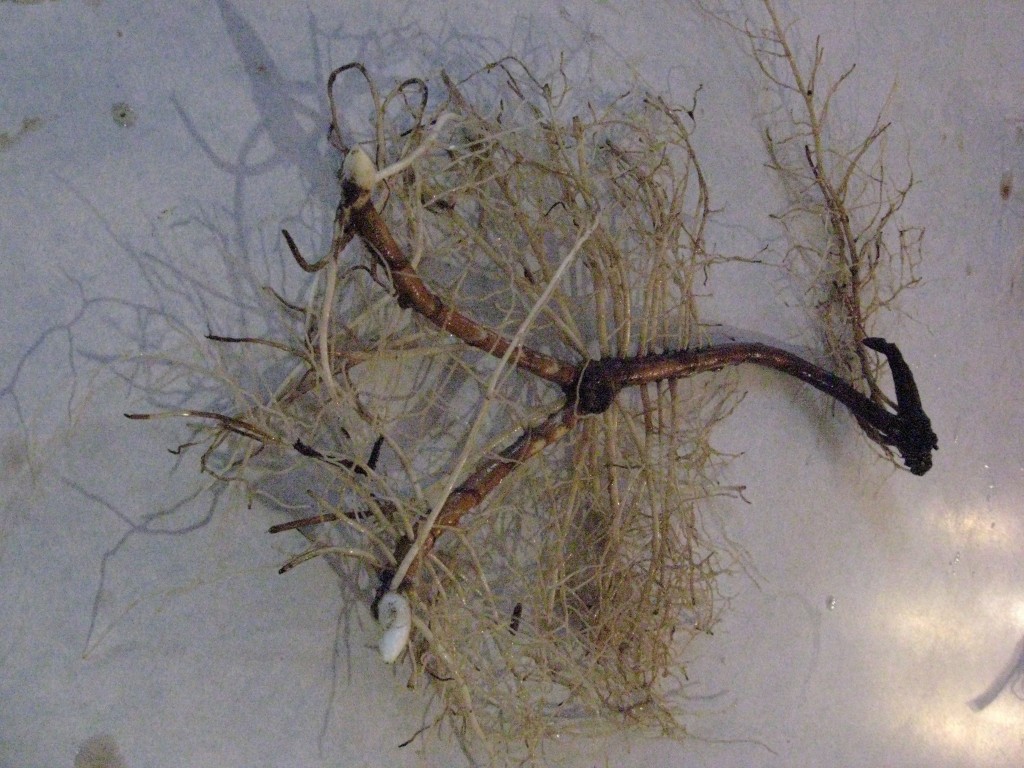
Gardening in the fall has few risks and is less labor-intensive. Â It is also better for learning about the basics of each plant gardened. Â The root of the matter, so to speak. Â Â Dig it up, wash it, check it out and learn about the amazing beauty of roots. Â Share it with a neighbor and let them experience the joy of root gardening. The washed root will insure that your neighbor will not get your weeds. Â Don’t have to worry about your transplant wilting and dying! Â It has all winter to adjust to its new digs. Â In fact the root mass will grab onto the soil and settle in. By January it will be connected into the new earth, ready to roll for Spring.
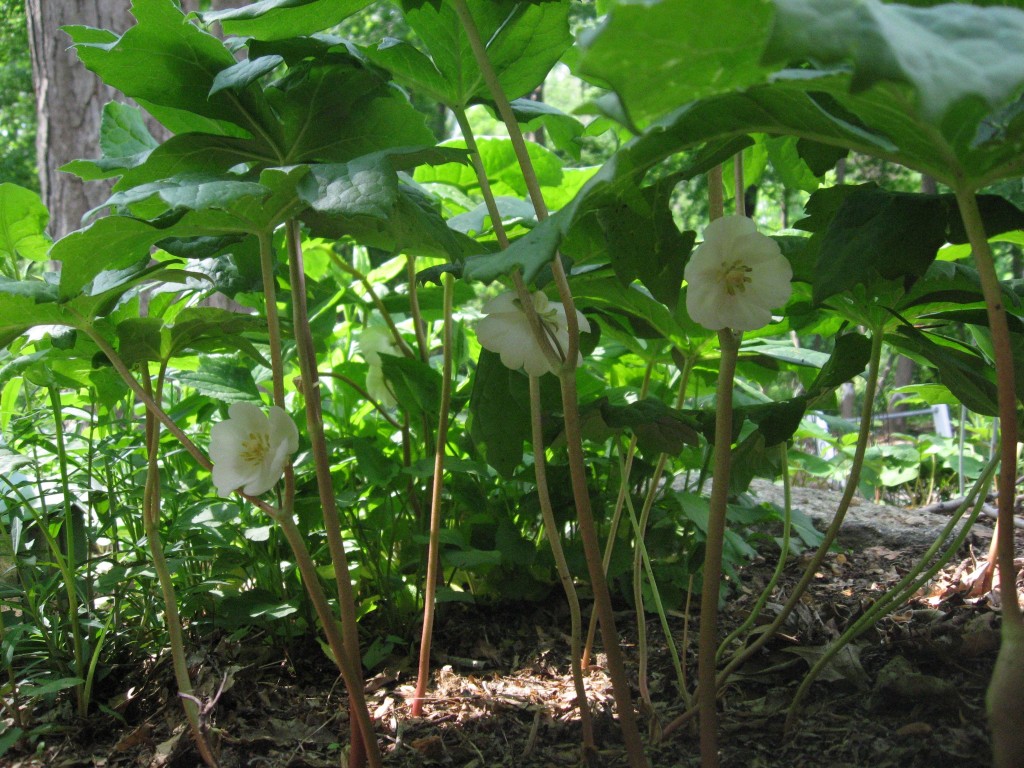
This Mayapple Patch, above, was planted from bare root a few seasons before. Â Below is Solomon’s Seal (Polygonatum commutatum), another woodland perennial that likes to be dug up, broken into pieces and replanted. Â It’s as if these plants are designed for gardeners to fuss over! Â This specimen still has its leaves.
Polygonatum commutatum
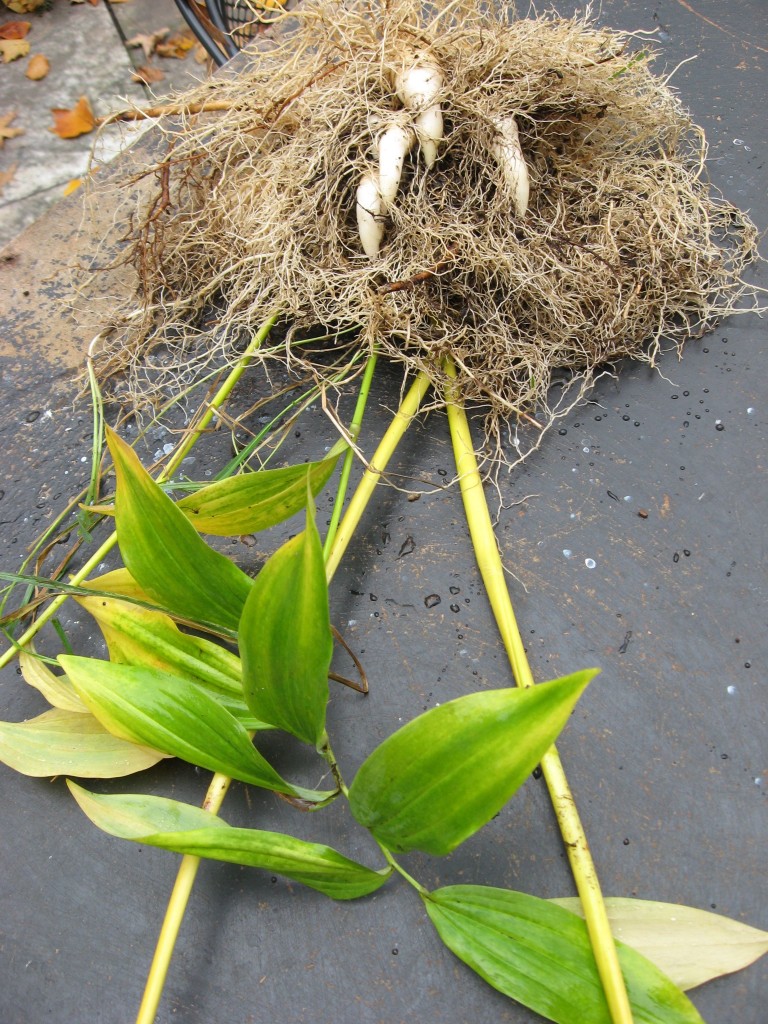
Those healthy white buds are a reminder of the vitality of this plant. It must have had a good season in our yard. We did find some Bloodroot that had a bit of rot around the edges of its roots this year. Â Bloodroot is not tolerant of poorly drained soils, and we have had a lot of rain this year.
Below is the Solomon’s Seal broken up into healthy segments ready to take over a patch of Japanese stiltgrass and to help provide some shade to its new Bloodroot neighbor. (Bloodroot does not like too much sun either.)
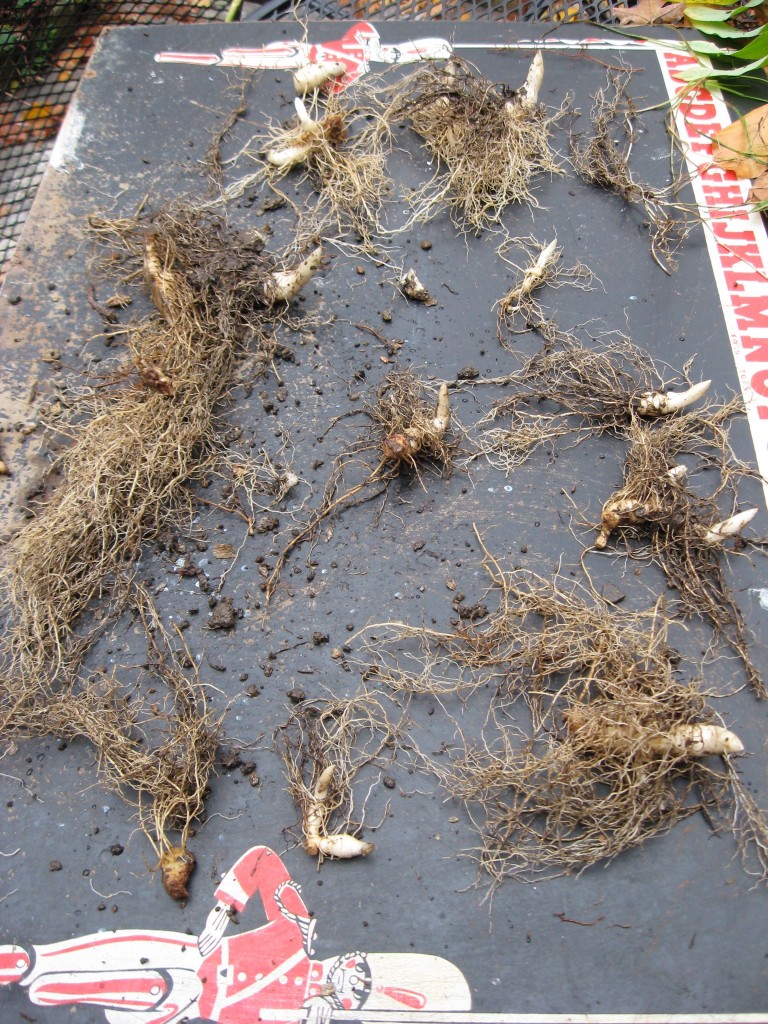
Below is the Solomon’s Seal plant in its full flowering glory. Â This plant was also planted from a root mass that was cut apart with a shovel, divided by breaking apart by hand and plopped into the tilled dirt in the Fall.
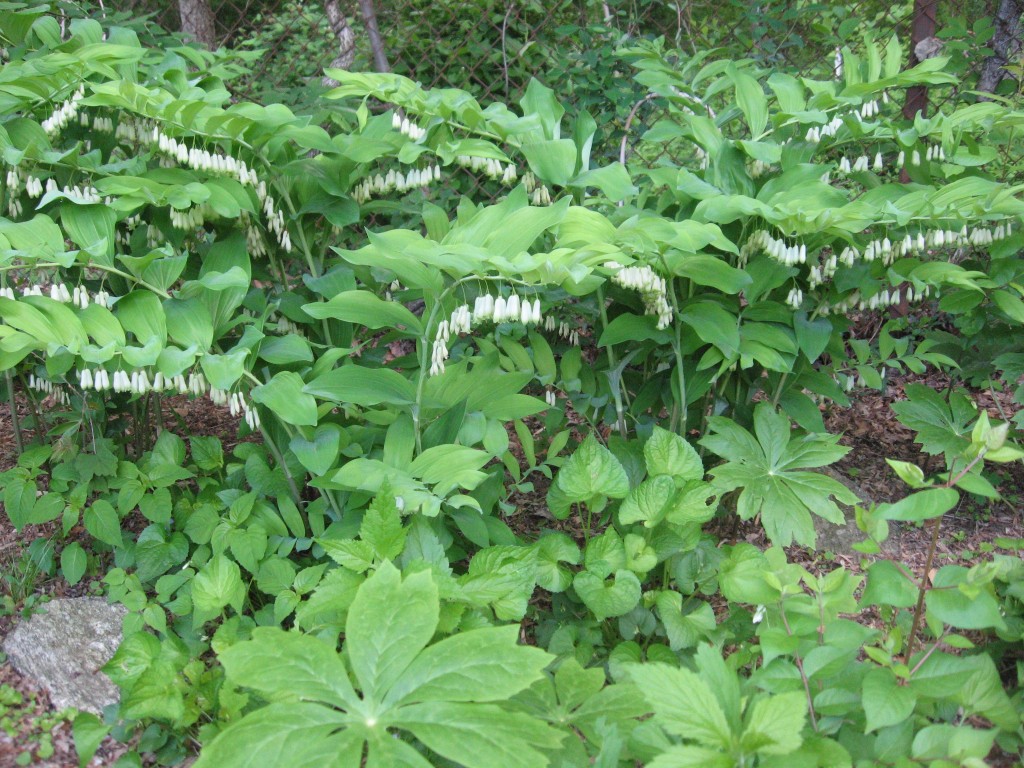
Gardening in the Fall makes sense yet it is also unconventional. You must have a vision and be able to wait a few months for the results.  Its not as glamorous as gardening in the spring, but it eliminates the risk of losing plants to the hot sun and the time spent on watering and worrying about your new transplants.  A rugged root will be a delicate flower next Spring.  Stick the root in the ground and wait, and all of a sudden, there will be a beautiful flower!  Good things come to those who can wait, as the saying goes.  Gardening in the Fall  is like building the foundation of a house.  It’s in the dirt, and its a rocky start. The beautiful white gables, dormers and porch balustrades come only after the stones have been set into the earth.
Gardening in the fall has one more important component: Leaf mulch creation. Â This is the time to grind up your leaves with a leaf blower/composter available at the garden center and/or the lawnmower. Â Rather than bagging them up and worrying if the city or township will take them or not, how about making them work for you? Â Ground up they make an attractive mulch and by next spring they will be compost, all for free. Â The native perennial flowers love leaf mulch more than any other, perhaps because they have spent the past millions of years growing under and within leaf mulch.
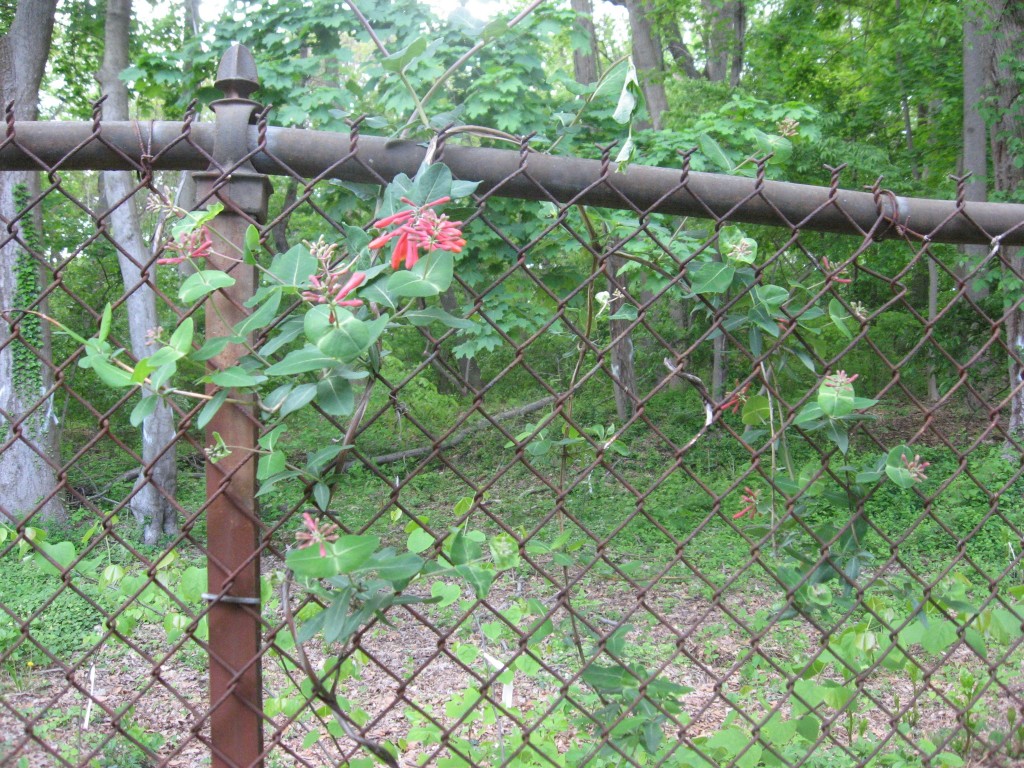
Lonicera sempervirens
Above is our native honeysuckle, blooming away. Â The hummingbirds would not leave this vine alone and hummed along all summer providing the Sanguine Root with hours of entertainment. Â The Hummingbirds have all migrated south, thanks in part to our providing them with the native plants required for their nourishment. Now, as of November 28th, the vine is still blooming.
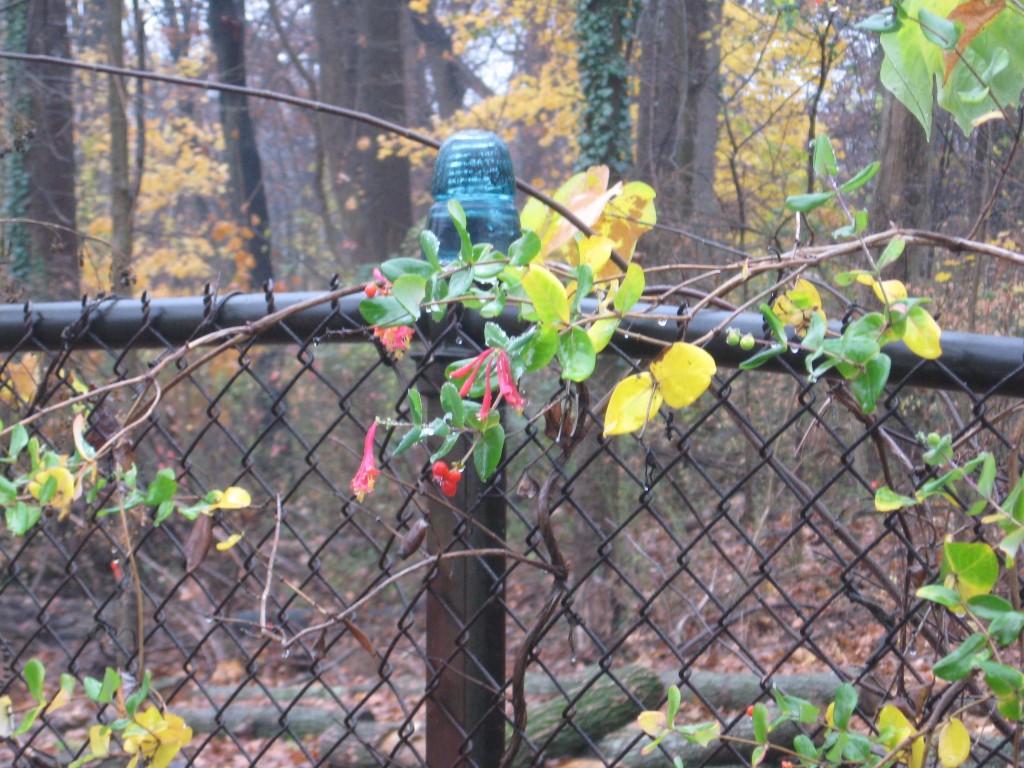
It is neat to think that this vine has provided a food source for a family of  birds that were able to fly over 1000 miles when the time required!  The rewards of native plant gardening!



Sean, Its true, the amount of energy and fuss that goes into leaf removal must consume so much energy that now we have fracking and this oil pipeline issue. The attitude towards leaves must change. How much does leaf removal contribute towards global warming? And to know that the leaves are the compost we need!
Wonderful post. I always thought the energy expended raking, blowing, sucking, transporting and piling leaves could be better used enjoying your garden. Thanks for spreading the joy.
This is inspiring. I just planted a coral honeysuckle at the start of fall and mulched it with the year’s compost. Hope it grows to serve the hummingbirds as well as yours does!
Scott, This is fantastic news! The best of luck with your new Lonicera sempervirens vine! There is a sizable patch that grows in Morris Park and there has been some lively discussion as to the origin of this patch- is it a garden escape or is it naturally occurring? We ask these important questions because of a new initiative by Fairmount Park to propagate native plants that have a local provenance in the Philadelphia area. If we can establish the local provenance, than it will be worthwhile to propagate this vine from seed for planting in the park.
Your vine will need sun to bloom. If all goes well and the hummingbirds roll in, we will hopefully see a post about it on the Little Crum Creek!
Nice pictures. That bloodroot looks like something from one of the Star Wars movies!
Something else isn’t it Mike? As soon as you go below the surface, we find a world of life forms that remind us of science fiction. Fall is a great time to dig this world up and examine it in the light of day.
I am inspired to go out and dig up my Solomon’s Seal and spread it around.
This is the time! What fun it is to dig up roots and break them apart and plant whole new patches of native flowers. Next Spring you can kick back and watch the show of blooming flowers.
Beautiful… I missed my fall walk through the Morris Park woodlands, but will plant the images of these roots in my heart to carry them through the winter, in hopes of seeming them bloom in the spring.
PeaceLove&Solidarity!
Jacob
Jacob, Its never too late for that fall walk. There is plenty of fall atmosphere here in Morris Park.
This is a fascinating post! It’s not often a gardening reader like myself gets more than a cursory mention of “time to dig up roots and save for spring.” Thanks for the great pictures, too. I’m motivated to dig up a few perennials like my Purple Coneflower and Coreopsis, and help them spread out and multiply…maybe when my errant nephew comes to visit he can help.
Imagine having a Sanguine Root staff horticulturalist assist you on your own garden!
This is the time to re-design your garden, or expand and improve it. Build good relations with neighbors through plant sharing. Its Root time!